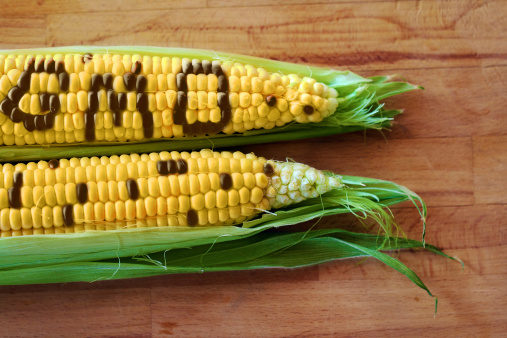New York, NY— On December 3 at the Kaufman Music Center in Manhattan, the motion concerned whether genetically modified organisms (GMOs) should have a place in agriculture. The formal debate of that motion, part of the Intelligence Squared series of public debates, featured thought leaders on both sides presenting arguments about the necessity, environmental impact and safety of GMOs as audience members asked questions and weighed in with a vote.
Both sides featured two debaters, with Robert Fraley, executive VP and chief technology officer at Monsanto, and Alison Van Eenennaam, genomics and biotechnology researcher at UC Davis arguing in favor of GMOs. Debating against the motion were Charles Benbrook, research professor at the Center for Sustaining Agriculture and Natural Resources at Washington State University, and Margaret Mellon, science policy consultant and former senior scientist with the Union of Concerned Scientists.
Before the event began, debate organizer Robert Rosenkranz was asked by moderator John Donvan why he felt so much emotion is invested in the subject of GMOs. Rosenkranz responded that food seems to be more than a lifestyle or health choice for many people, saying, “I think that people look at the food they eat as an expression of who they are.”
Asked by Donvan how he felt about his side’s prospects before the debate, Benbrook replied, “Since we have the facts and science on our side, I think we'll be fine.” Donvan needed to settle down and push past certain questions from a lively audience that included Bill Nye the Science Guy and many others clearly invested in one side of the debate or the other. During the debate, he also frequently chose to direct the debaters to focus on key sticking points regarding the safety and real impact of GMOs.
In his opening remarks, Fraley gave a bit of history on GMOs before underlining arguments in their favor. “This has been the most rapidly adopted technology in the history of agriculture, and that’s because its benefits have been so real and so clear,” he said. Fraley often returned to the assertion that scientific consensus on the safety of GMOs is as clear as that on climate change. He also emphasized multiple times the belief that GMOs are a key way to feed a rapidly expanding global population, saying, “We will need to produce more food in the next 36 years than we have in the entire history of the world.”
Mellon’s main theme was to question whether GMOs are truly essential to increasing yields and feeding the world. She cited the environmental consequences of pesticide-based agriculture. GMO critics often focus on the notion that pesticides and GMOs are hopelessly intertwined in escalating cycle that creates resistant weeds and an unsafe food supply. Mellon also questioned the biotech industry’s promises about the potential of GMOs to improve the environment and food security, calling the results thus far “a big disappointment.”
Citing the widespread adoption of GMOs by over 18 million farmers globally, including many in the developing world, Van Eenennaam spoke about bodies of research that indicate GMOs are safe and beneficial. She said that one recent German review found GMOs in agriculture reduced pesticide use by 37% and increased yields by 22%. Later in the debate, the other side would argue that any decrease in insecticide use has been more than offset by increases in herbicide use.
“I think it’s time for a national fireside chat about the application of agricultural biotechnology in food production,” Benbrook said. Rather than try to assess the promise and aspirations of those behind GMOs, he urged the audience to think about the reality of genetically engineered agriculture today.
The debate’s middle rounds and Q&A portion featured discussion of finer points like the design and validity of current safety research, stacked traits in GMOs and the economic impact of GMO crops being rejected by other countries.
After final statements, the audience voted to determine a winner. Prior to the debate, the audience had used keypads to record whether they were for, against or undecided on the motion. They did the same afterwards, and the winning side was the one that saw the greatest increase in percentage of the vote. Before the debate, 32% said they were for GMOs, 30% against and 38% undecided. Afterward, 60% voted for GMOs and 31% voted against, making the pro-GMO side the winner.
More clarity the GMO debate, or at least the question of safety, may be in the pipeline, as a $25 million research effort is underway in London to examine whether GMOs and associated pesticides like glyphosate are safe for human health. The study, officially called the “Factor GMO” study, is the world’s largest ever on GMO and pesticide safety. The study’s preparatory phase took place in 2014, with the full experiment set to begin in 2015 and continue for at least two years. It will test herbicide-tolerant GMO maize, along with realistic levels of the glyphosate herbicide it is modified to tolerate, on over 6000 rats.
Published in WholeFoods Magazine, January 2015 (online 12/4/14)










